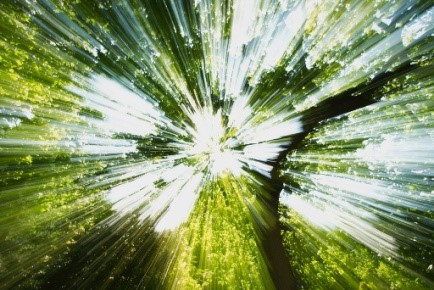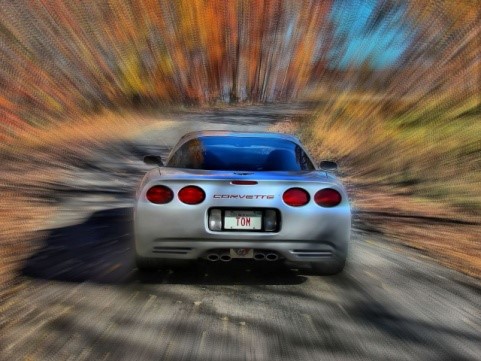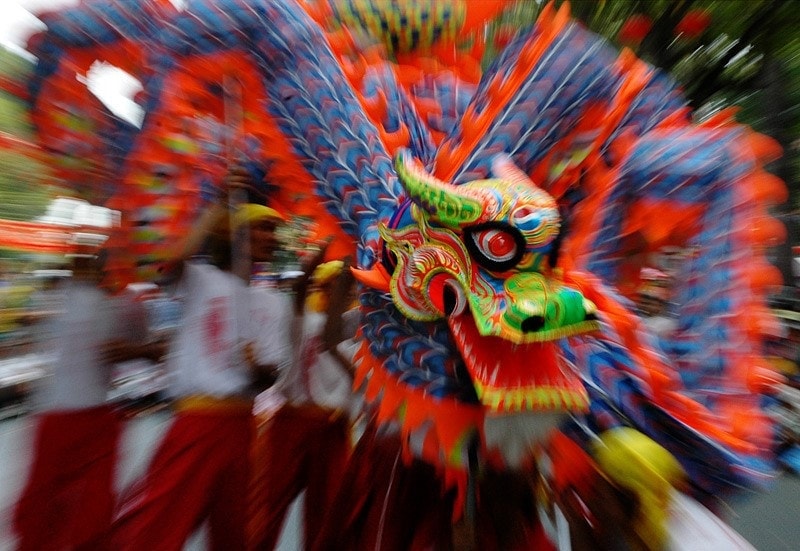Some time ago, in the article “ Tips for Capturing and Transmitting Movement in a Photograph ”, I told you that one of the most popular techniques to give your photographs a sensation of movement was through the well-known “zooming” technique, but of course It was the reason for said article to delve into this photographic technique , I only mentioned its fundamental aspects.
In today's article, this has changed: after reading it, you will not only learn how to use this spectacular technique, but also how to combine it with others to take your photographs to another level.
Don't worry, it's really very simple! You will not need to go crazy to do them, you just need to get comfortable and read the article that I have prepared for you. Are you going to miss it?

WHAT IS THE “ZOOMING” EFFECT?
The zooming effect is a technique that, through lines that converge in the center of the frame, will allow you to convey the sensation of movement by using the lens zoom. These lines will direct the viewer's attention towards the center (or not, you'll see why) of the photograph, generating a sensation of movement and vertigo inwards or outwards, achieving an effect as particular as it is attractive.
This effect “barriers” all the objects in the frame that are located around the center of the frame by varying the focal length with your zoom lens, focusing attention on a particular object that you have chosen, by using relatively slow shutter speeds. long.
The main limitation of this technique is that the protagonists must always be located in the center of the frame so as to avoid that, when "sweeping the scene" by zooming in or out, you end up sweeping them away. Anyway, at the end of the article I will teach you how to circumvent this limitation.
It seems somewhat complex, right? Don't worry, it's easier to do than to explain! But first, let's see what equipment you will need to carry it out.
WHAT EQUIPMENT DO I NEED?
To be able to take these types of photographs, you will need, in principle, a camera that allows you to take photographs in manual mode and have a zoom lens, that is, a variable focal length. Contrary to what you can imagine, this effect is not only the power of SLR cameras, since you can achieve it with any camera as long as it meets the two conditions that I have just mentioned.
Also, although it is not exclusive, having a tripod can not only make things a little easier for you, but also allow you to obtain better results. Remember that when working with slow shutter speeds, it is much more likely that any movement will end up ruining your shots.

HOW TO ZOOM? BY FOLLOWING THESE SIMPLE STEPS:
Zooming with Photoshop is very simple, we explain it to you in the link. However, the grace is in doing it manually. With a little practice and following these steps you will get spectacular photos with zooming effect:
- Once you have decided what the subject of your photograph will be, frame it in the center of the scene.
- To compensate for the “excess light” entering the sensor, use as small an aperture as possible if you don't want to overexpose your shots. Also, by increasing the depth of field, if you close the diaphragm, the sharpness of your photographs will increase and, consequently, their quality.
- Select a slower shutter speed than you would normally use to take the same shot. When working with slow speeds, the light will reach the sensor for a longer time, compensating for the lack of light due to using more closed diaphragms.
- Finally, while the shutter is open (allowing light to reach the sensor) zoom in or out depending on the effect you want to achieve. By varying the focal length, while your subject remains fixed in the center of the frame, it "barriers" everything around it.
THE KEY: SHOOT SLOWLY
The key for you to achieve a successful "zooming" effect is the shutter speed. Depending on how long your camera's sensor continues to receive light, the effect will be more or less pronounced, giving the viewer a greater or lesser sensation of vertigo, speed and movement.
Take a look at the following photos:



Have you noticed the difference? In each of them a slower shutter speed has been used. The first of them is the one with the highest speed while to carry out the other two, this has been decreased (speeds are increasingly slower). Not only has the sensation of speed intensified, but also, as a result of taking a longer exposure, the photographs began to “lighten up”.
Keep in mind that, the longer you leave your sensor receiving light, if you do not compensate the exposure with any of the other components of the exposure triangle (ISO sensitivity or aperture), the greater probability of overexposing your photographs you will have and that In addition, they end up moving.
Anyway, don't worry, with a little practice you will be able to master the “zooming” effect easily.
Don't know what the exposure triangle is? Don't worry, the following article will clarify all your doubts: " Detailed Guide: How to Make a Correct Measurement and Exposure in Your Photographs ".
Now that you know how to do it, you just need to follow some recommendations:
- It will be easier for you to apply this technique in low light conditions because it requires longer exposure times. The less “amount of light” there is in the environment, the less likely it is to “burn” your photographs, that is, you will have to overexpose them.
- If you want to give it more spectacularity, add some extra light sources such as: spotlights, posters, etc. The lines that these will draw in the frame will draw a lot of attention from your viewers.
- Although the technique is known as “zooming”, nothing prevents you from decreasing it instead of increasing the focal length. The effect will be just as spectacular.
- Try taking the same photo with different shutter speeds as in the previous example. The more you practice, the closer you will be to achieving that photograph that you imagine so much.
- Using a tripod will be very helpful in order to prevent vibrations caused by zooming from ruining your photos.
- Although you can achieve this effect with any non-fixed lens, if you have a wide-angle lens handy, use it. With a wide angle lens, its own distortions will make this effect something spectacular.
- Go ahead and combine this amazing technique with others to add more spectacularity. At the end of the article you will see some very interesting combinations.

WHEN TO USE THE ZOOMING EFFECT?
Although you can use this technique to take any type of photograph and in almost any situation, this effect will not help you to make your photos more attractive in all of them.
This technique is ideal for conveying the sensation of speed and adding some vertigo to your photographs, but if you do not want to convey these sensations or the reason for the photograph does not require it, you will not be able to turn a good photo into an excellent one.
This means that not only must the effect be well used, that is, with a clear protagonist, but also that it must be enhanced by said effect.
Regardless of the type of situation where you are going to take your shots using this technique, the result will not always be so spectacular, but take a look at the following photographs:


So far you have seen how to use this technique in order to enhance the messages and sensations of your photographs and increase their attractiveness. Now it is time for you to see some tricks so that, when combined with this effect, you can take your photographs to the next level:
How to break the limitation of the center?
One of the main limitations of this technique is that, as I mentioned earlier, for the effect to be effective, you need to place the subject of the photograph in the center of it, so that it remains clear despite the "swept".
Now, with a little imagination you can get around this limitation and get photos like this:

I eat? Try placing the subject in the center, take your photo and then reframe it, either editing it from the camera (the vast majority of current cameras allow you to crop and reframe) or from your computer.
That is, take the picture and then make the final composition on the computer!
Painting with light and zooming
Stop being the photographer and become the painter. You can try combining this effect with the one used to “paint” your photos to achieve unique photographic brushstrokes.
As you zoom in, move your camera slightly to one side or the other, to achieve brushstrokes throughout the entire frame. At first it will be difficult for you to combine both effects but, with a little practice, you will be able to become a true painter using nothing more than your camera.

add some light
Another way to add spectacularity to your zooming photos is if, at the moment of carrying out said effect, you shoot a flash on your subject. Why? The flash of the flash will freeze your protagonist , while when zooming, barriers with everything around him.
This combination of effects will allow you to achieve amazing photographs, since one part will have come out perfectly clear and static, while everything around it will be “swept”, transmitting a sensation of movement. Do the tests!

When you learn to master this technique you will be able to transform a photograph like this:

In another like this:

You just need to take your camera and go out to take pictures. What are you waiting for?


